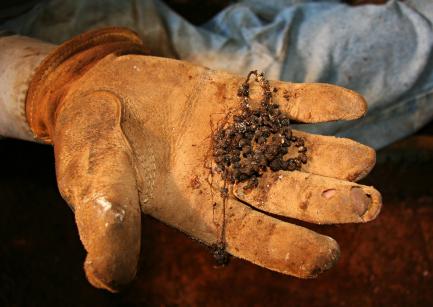Smithsonian and Congressional Cemetery Unite to Re-bury Shriver Family Ancestors
More than 180 years since they were first laid to rest in Historic Congressional Cemetery, ancestors of the Shriver family will be reinterred in the presence of their living relatives following a memorial service Wednesday, June 11, in Washington, D.C.
In July 2009, National Museum of Natural History forensic anthropologist Douglas Owsley and a team of anthropologists and archaeologists began excavating one of Congressional Cemetery’s historic burial sites known as the Causten Vault, and they systematically analyzed the skeletons and associated artifacts of 16 individuals buried inside. These remains represent three lineages of families who lived in Washington, D.C., between 1850 and 1900 and are connected to the journalist and former first lady of California, Maria Shriver, her siblings and their parents, Sargent and Eunice Kennedy Shriver.
The restoration effort supports Congressional Cemetery’s initiative to renovate historic tombs in danger of collapse, including the 1835 Causten Vault, while helping scientists understand what life was like for city dwellers in the 19th century.
Congressional Cemetery requested support from the Smithsonian to prepare the Causten Vault by excavating the site and removing layers of debris inside the space. The bones were examined and documented at the National Museum of Natural History, a process that involved sorting and reassociating the mixed remains of more than a dozen individuals.
“We are pleased to have helped Congressional Cemetery restore one of its irreplaceable burial sites,” said Owsley. “The information gained by sorting through the contents of the historic Causten Vault adds another piece to the puzzle of what life was like for urban families living in the greater Chesapeake region in the 1800s.”
Researchers from the Smithsonian and Congressional Cemetery completed detailed reviews of historic documents and interment records and conducted forensic analyses of each set of remains. In total, 16 people ranging in age from 14 days to 86 years who died between 1852 and 1899 were identified, including the parents of Henrietta Causten Shriver, the wife of Shriver family patriarch Joseph Shriver, and several of her siblings. Causes of death for family members range from illnesses such as dysentery, nephritis, enteritis and heart disease to death related to childbirth. Infant mortality was also common during this time period.
In addition to skeletal remains, several silver-plated nameplates belonging to interred family members were recovered from the vault, including the nameplate of Josephine Shriver. Josephine was the daughter of Henrietta Causten Shriver and Joseph Shriver, and she died from unknown causes in 1847 when she was only 4 years old.
“Congressional Cemetery remains an active burial ground, but we take very seriously our mission to preserve the substantial national history that resides there,” said Paul K. Williams, president of the Cemetery. “We are thrilled to be working with the Smithsonian and to celebrate the restoration of one of our most historically significant burial sites with members of the Shriver family living today.”
Congressional Cemetery was established in 1807 and is the final resting place of some of the nation’s most noteworthy early citizens, including 16 senators, 68 representatives and Vice President Elbridge Gerry, a signer of the Declaration of Independence and the namesake behind the term “gerrymandering.” The cemetery sits on a 35-acre plot located on Capitol Hill and contains more than 65,000 burial sites, many of which fell into disrepair in the 1960s and 1970s and are currently under renovation. The Smithsonian and Congressional Cemetery continue to work together to preserve the history of this cemetery and tell the stories of the people buried there.
Owsley is the division head of the Natural History museum’s Physical Anthropology Department and is engaged in forensic anthropology case work, assisting law enforcement agencies with human identification cases. His current research is focused on human skeletal remains from the 17th-century Chesapeake region of Virginia and Maryland, ancient American skeletons such as Kennewick Man and the peopling of the New World. Owsley previously analyzed the remains of Major General Alexander Macomb during a 2008 restoration of Macomb’s monument in Congressional Cemetery.
# # #
SI-280-2014






